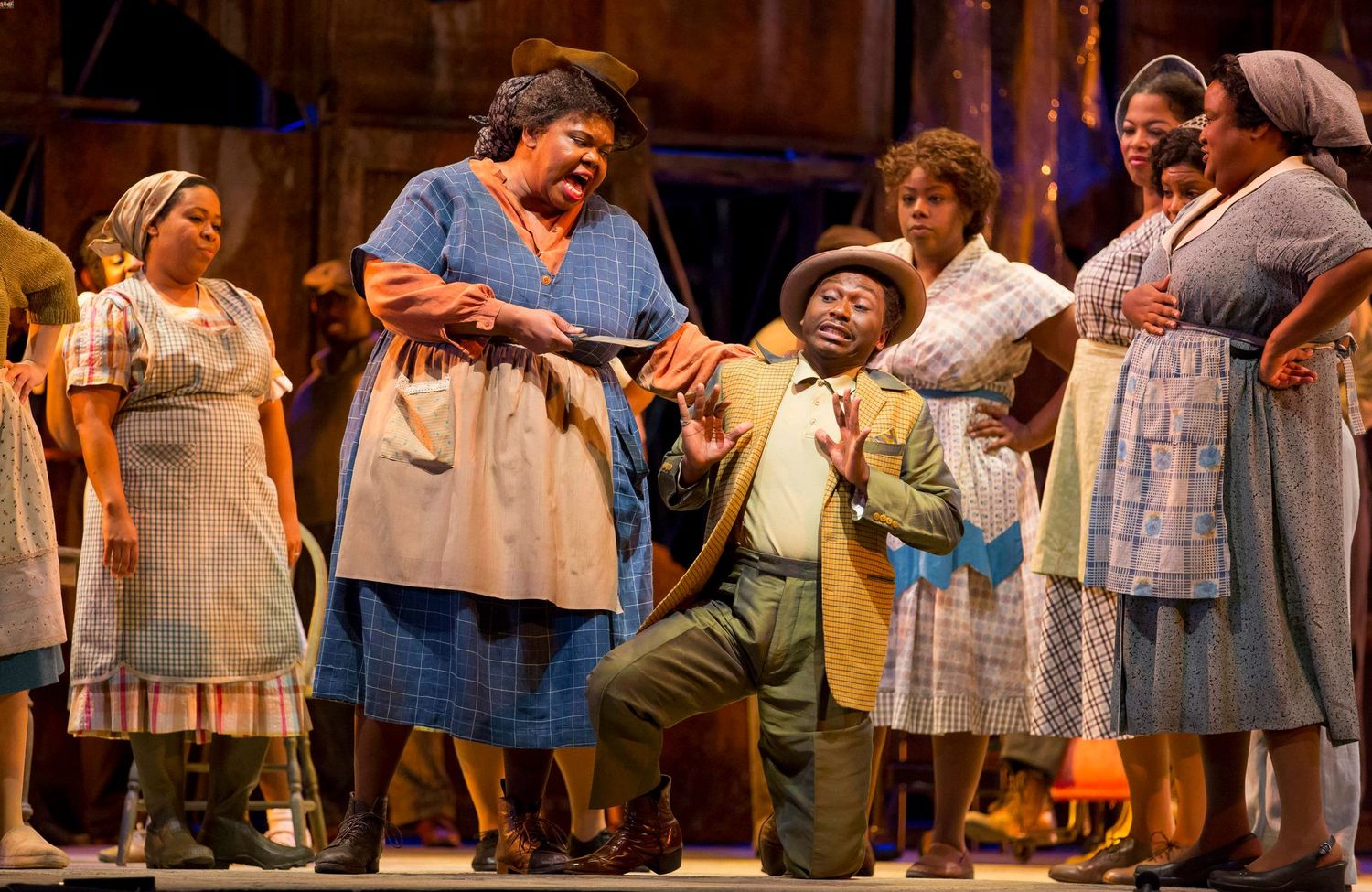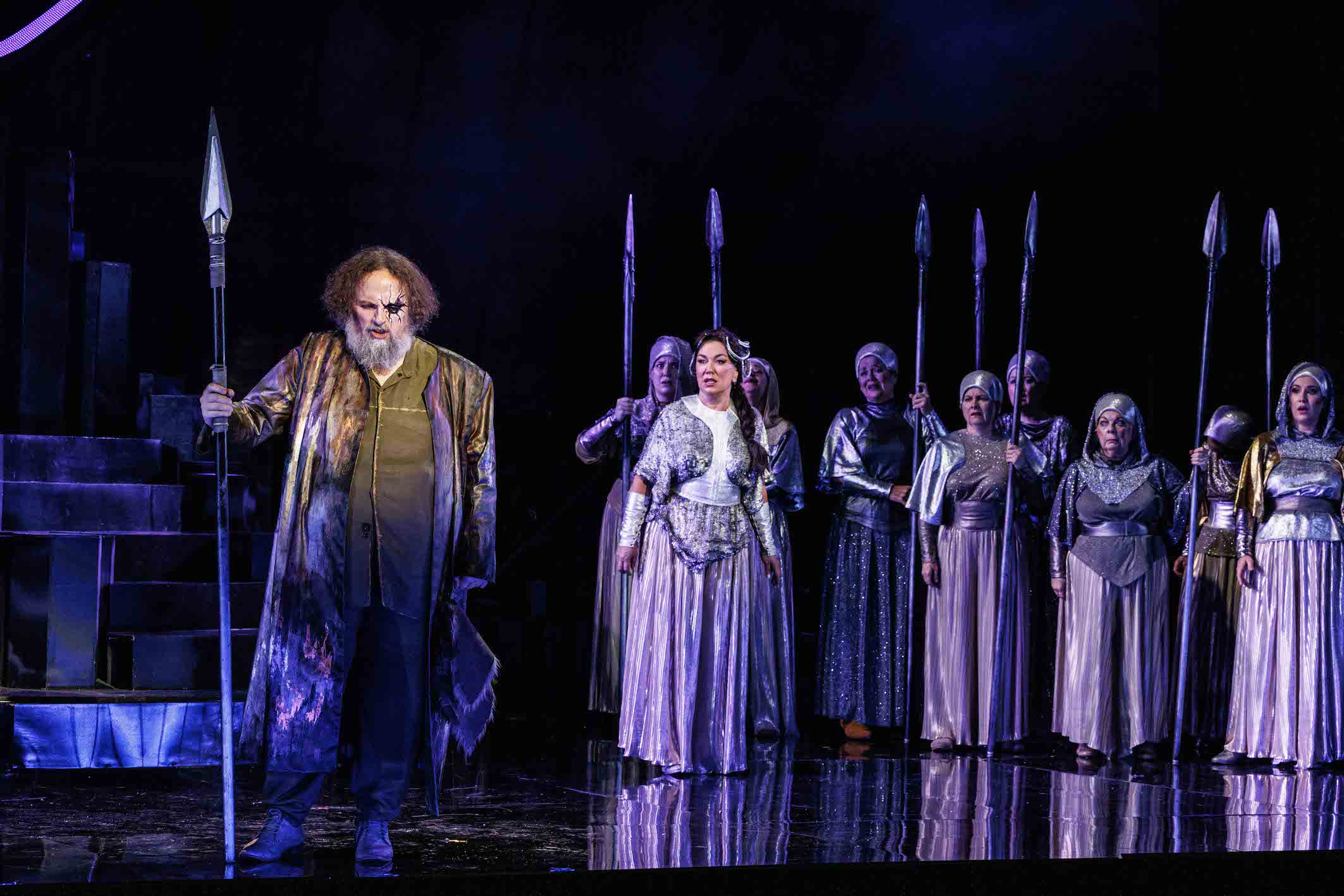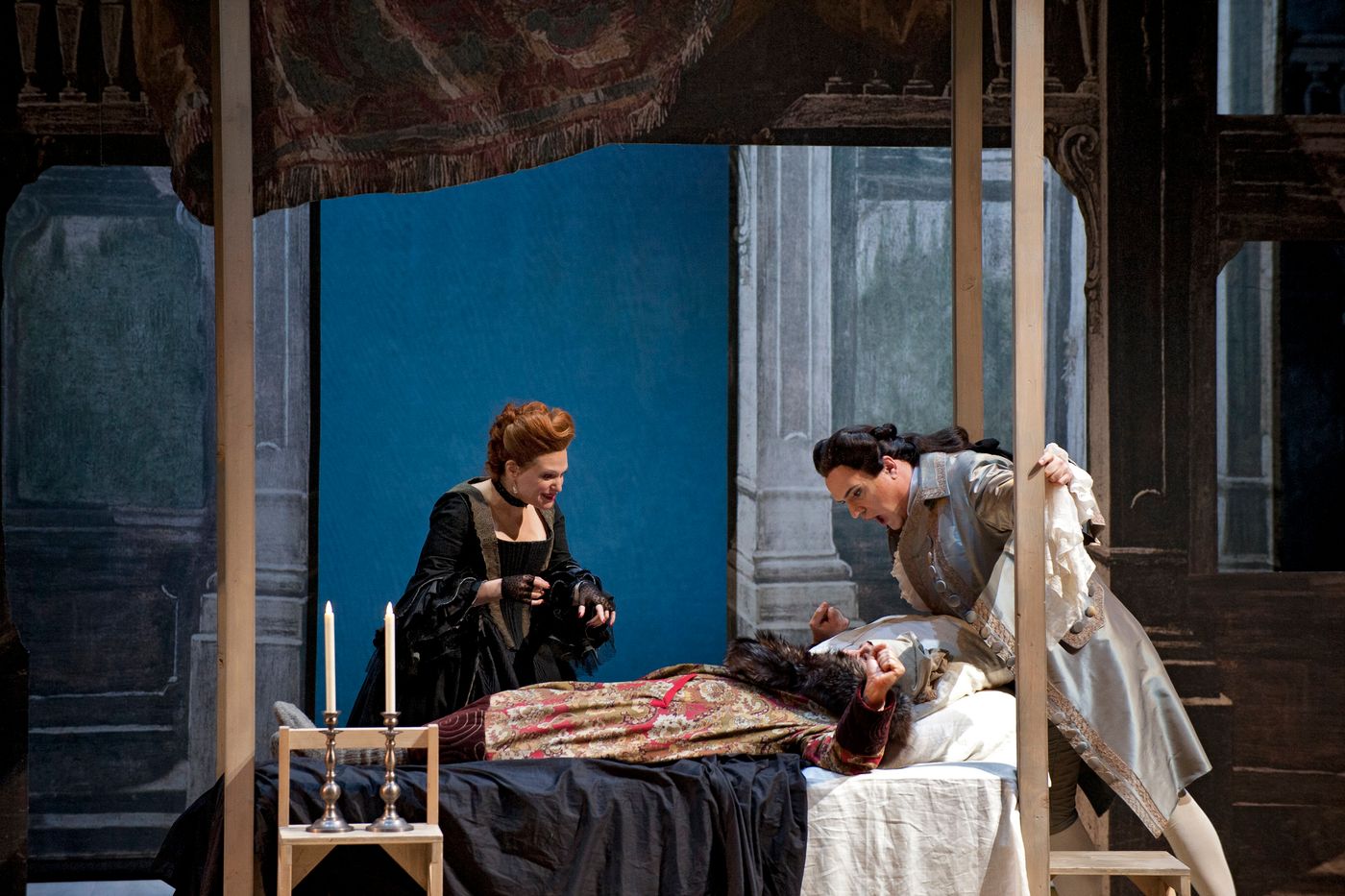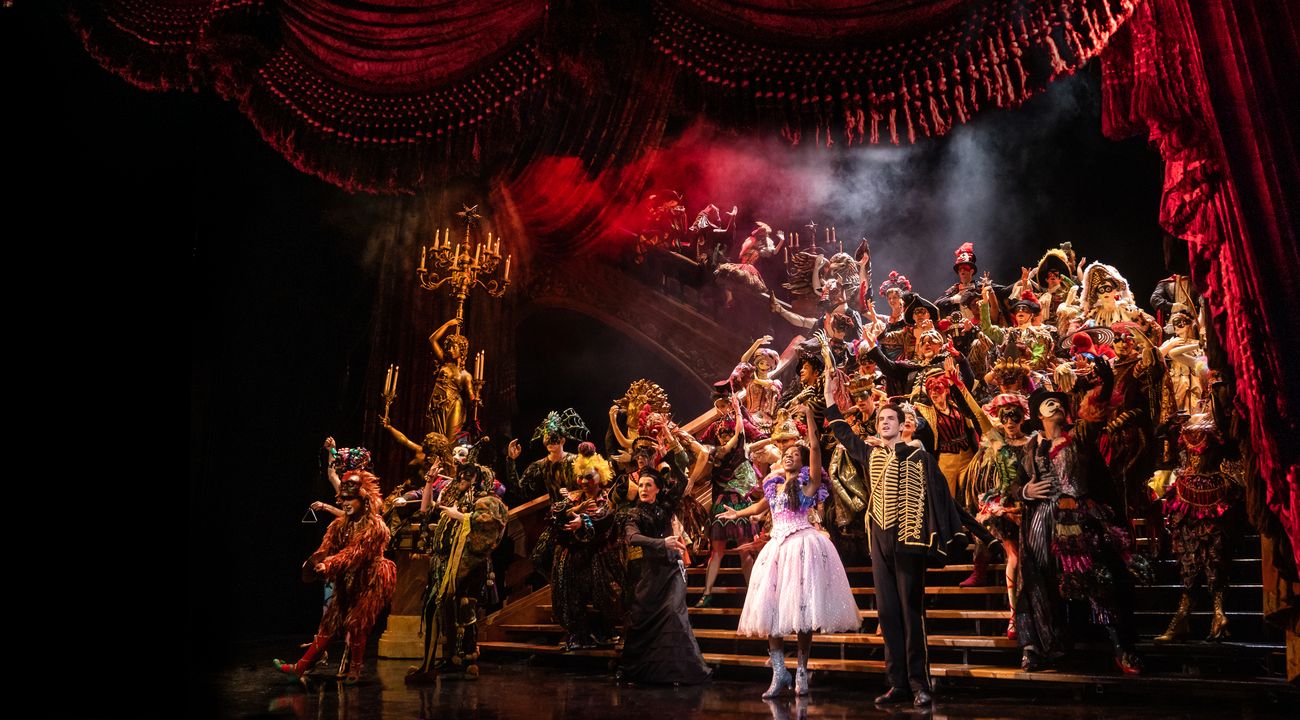Home>Events & Info>Opera>The Tune Summertime Comes From Which Opera


Opera
The Tune Summertime Comes From Which Opera
Modified: January 22, 2024
Discover the origins of the tune "Summertime" and which opera it comes from. Explore the world of opera and uncover the secrets of this timeless melody.
(Many of the links in this article redirect to a specific reviewed product. Your purchase of these products through affiliate links helps to generate commission for AudioLover.com, at no extra cost. Learn more)
Table of Contents
Introduction
Opera is a magnificent form of art that combines music, drama, and spectacle to create breathtaking performances. Within the realm of opera, there are certain tunes that have become iconic and timeless, transcending the boundaries of the genre itself. One such tune is “Summertime,” a melody that evokes feelings of warmth, nostalgia, and longing.
Originally composed by George Gershwin as part of his renowned opera “Porgy and Bess,” “Summertime” has emerged as one of the most recognizable and beloved songs in the history of music. Its hauntingly beautiful melody and evocative lyrics have captured the hearts of audiences around the world for decades.
In this article, we will delve into the origins of the tune “Summertime” and explore its significance within the context of the opera. We will also examine the plot of “Porgy and Bess” to gain a deeper understanding of how this iconic tune fits into the larger narrative. Additionally, we will explore the various adaptations and popular renditions of “Summertime” that have further cemented its place in the musical canon.
So, let’s embark on a musical journey and discover the magic behind “Summertime” as it emerges from the depths of opera and captivates our senses with its timeless allure.
Brief history of the tune “Summertime”
The origins of the tune “Summertime” trace back to the year 1934 when George Gershwin, an American composer, began working on his groundbreaking opera “Porgy and Bess.” Collaborating with his brother Ira Gershwin, who penned the lyrics, Gershwin set out to create a masterpiece that would blend elements of classical music, jazz, and folk traditions.
Gershwin drew inspiration from the rich cultural heritage of African American communities living in the southern United States. The story of “Porgy and Bess” revolves around the daily struggles and triumphs of the residents of Catfish Row, a fictional African American neighborhood in Charleston, South Carolina.
“Summertime” serves as the opening aria of Act I in “Porgy and Bess” and is sung by the character Clara, a young mother. The song is a lullaby that reflects on the beauty of the summer season and the hopes and dreams it carries. Its enchanting melody, paired with poignant lyrics, encapsulates a deep sense of longing, love, and resilience.
Despite initial skepticism from critics and audiences, “Porgy and Bess” soon became recognized as a groundbreaking work of American opera. Its bold exploration of racial and social issues and its incorporation of jazz and African American musical traditions challenged the conventional norms of the genre.
While the entire opera is a masterpiece in its own right, “Summertime” quickly emerged as a standout piece. Its simplicity, combined with its emotional depth, struck a chord with listeners and solidified its place as an enduring classic.
Over the years, “Summertime” has been covered by countless artists from various musical genres, cementing its status as a truly iconic tune. Musicians such as Billie Holiday, Ella Fitzgerald, Janis Joplin, and Louis Armstrong have all offered their unique interpretations, further adding to the song’s cultural significance and longevity.
Today, “Summertime” continues to resonate with audiences around the globe. Its timeless melody and universal themes of love, dreams, and hope have made it a beloved staple in both the opera world and popular culture.
We will now explore the specific role of “Summertime” within the context of “Porgy and Bess” and unravel the captivating story that lies behind this remarkable composition.
Origins of the tune in opera
The origins of the tune “Summertime” in opera can be traced back to the collaborative efforts of George Gershwin, DuBose Heyward, and Ira Gershwin. In the early 1930s, George Gershwin expressed his desire to compose an opera that would explore the lives and struggles of African American communities in the United States.
To bring this vision to life, Gershwin teamed up with author DuBose Heyward, who had written a successful novel titled “Porgy” in 1925. The novel depicted life in the African American neighborhood of Charleston, South Carolina, providing a rich source of material for the opera.
Heyward and Gershwin worked closely together to adapt the novel into a libretto, or the text of the opera, while Ira Gershwin took on the task of crafting the opera’s lyrics. The collaborative effort aimed to capture the essence of African American music and culture, infusing it with Gershwin’s unique compositional style.
In their exploration of African American musical traditions, Gershwin and Heyward found inspiration in the rich heritage of spirituals, folk songs, and jazz. They sought to authentically represent this cultural tapestry within the opera, using music as a means to highlight the beauty, struggle, and resilience of the characters.
“Summertime” emerged as a central piece within the opera, serving as a musical and thematic anchor. It encapsulates the dreams, aspirations, and hope of the characters, conveying a sense of longing for a better life. The melody of “Summertime” draws upon elements of spirituals and lullabies, reflecting the heartfelt emotions and the tenderness of a mother’s love.
Gershwin’s composition exhibits his brilliance in merging classical and popular music styles, incorporating elements of jazz, blues, and even elements of European operatic traditions. The result is a captivating and poignant melody that resonates deeply with audiences.
The incorporation of “Summertime” into “Porgy and Bess” not only showcases the skill and creativity of George Gershwin as a composer but also highlights the significance of the tune within the larger narrative of the opera. It serves as a musical motif that represents the hopes and dreams of the characters, as well as the cultural heritage and struggles of the African American community.
Next, we will delve into the specific opera, “Porgy and Bess,” and explore how “Summertime” fits into the larger context of its story and characters.
The opera that features the tune “Summertime”
The opera that features the beloved tune “Summertime” is none other than “Porgy and Bess.” Composed by George Gershwin with a libretto by DuBose Heyward and lyrics by Ira Gershwin, “Porgy and Bess” is a landmark work in American opera.
Set in the fictional neighborhood of Catfish Row in Charleston, South Carolina, “Porgy and Bess” tells the story of the residents’ daily struggles, hopes, and dreams. At the heart of the opera is the love story between the disabled beggar Porgy and the beautiful yet troubled Bess.
“Summertime” serves as the opening aria of Act I and is sung by the character Clara, the wife of Jake, who is a fisherman in the community. Clara’s lullaby to her baby encapsulates a sense of warmth, comfort, and yearning for a better life. The lyrics poetically evoke the beauty and simplicity of the summertime, juxtaposing it with the harsh reality and hardships faced by the characters.
Throughout the opera, the tune “Summertime” reoccurs in various forms and is interwoven with the emotions and experiences of different characters. It acts as a leitmotif, a recurring musical theme associated with a particular character, emotion, or idea.
The inclusion of “Summertime” in “Porgy and Bess” showcases the power of music to convey profound emotions and connect with audiences. The melody, with its hauntingly beautiful simplicity, captures the essence of the characters’ dreams and desires in a way that words alone cannot express.
Moreover, the opera as a whole explores a wide range of themes, including love, resilience, community, and racial inequality. “Porgy and Bess” pushes the boundaries of traditional opera by showcasing African American culture and history, while also addressing universal human experiences and emotions.
Although “Porgy and Bess” received mixed reviews upon its premiere in 1935, it has since garnered widespread acclaim and has become a cornerstone of the operatic repertoire. Its portrayal of the African American experience and its use of jazz and folk musical idioms have made it a significant cultural and artistic landmark.
Next, we will delve into the contextual analysis of “Porgy and Bess” and examine how the tune “Summertime” contributes to the overarching themes and storyline of the opera.
Analysis of the opera’s context and plot
To truly understand the significance of the tune “Summertime” within the opera “Porgy and Bess,” it is essential to delve into the contextual analysis of the opera’s plot and themes.
“Porgy and Bess” is set in the early 20th century in the impoverished African American neighborhood of Catfish Row in Charleston, South Carolina. The opera explores the daily struggles of its residents, who face poverty, addiction, and racism. At its core, “Porgy and Bess” delves into themes of love, hope, and societal issues through the lens of its complex characters.
The main protagonist, Porgy, is a disabled beggar living in Catfish Row. Despite his physical limitations, he embodies resilience, strength, and a kind spirit. Porgy’s life takes a transformative turn when he falls in love with Bess, a troubled woman with a dark past. Their evolving relationship forms the emotional backbone of the opera.
Bess is initially involved with Crown, a violent and possessive man, but when Crown leaves town after murdering another man, Bess seeks solace and redemption in Porgy’s love. However, their journey is far from smooth, as they face external obstacles and internal conflicts.
“Summertime” marks the beginning of the opera, setting the stage for the recurring themes of longing, dreams, and escapism. It creates a sense of the duality present in the characters’ lives – the desire for beauty and happiness juxtaposed with the harsh realities they face.
As the opera progresses, the tune “Summertime” evolves to reflect the changing circumstances and emotions of the characters. It reoccurs during moments of tenderness, longing, and introspection, providing a musical thread that weaves together the narrative elements.
The exploration of race and identity is another crucial aspect of the opera’s context. “Porgy and Bess” tackles the pervasive racism and discrimination faced by the African American community. It portrays a community that struggles against societal prejudices while finding strength and unity within their own group.
The opera also delves into the complexities of addiction and the influence of external forces on individuals’ lives. Bess, with her history of drug use and her vulnerability, grapples with her personal demons and seeks a sense of belonging and redemption.
Through its powerful storytelling and emotionally resonant music, “Porgy and Bess” exposes the audience to the struggles, resilience, and humanity of its characters, creating a nuanced exploration of the African American experience and the universal themes of love, hope, and perseverance.
By understanding the larger context and plot of “Porgy and Bess,” we can appreciate how the tune “Summertime” plays a crucial role in capturing the essence of the characters’ dreams, desires, and the complex world they inhabit.
Significance of the tune in the opera
The tune “Summertime” holds immense significance within the opera “Porgy and Bess.” It serves as a musical motif that encapsulates the themes, emotions, and aspirations of the characters, while also contributing to the larger narrative and impact of the opera.
First and foremost, “Summertime” acts as an emotional anchor within the opera. It captures the essence of the characters’ dreams and desires, providing a glimpse into their longing for a better life. The lyrics and melodic beauty of “Summertime” evoke both the simplicity and the complexity of the human experience, allowing the audience to connect with the characters on a deeply emotional level.
The repetition of “Summertime” throughout the opera reinforces its significance. This recurring motif creates a sense of unity and cohesion, linking the various storylines and emotions present in “Porgy and Bess.” Whether sung by Clara, Bess, or other characters, each rendition of “Summertime” adds layers of meaning and complexity to the overall narrative.
Furthermore, the tune serves as a representation of the African American experience and cultural heritage within the opera. By incorporating elements of spirituals and lullabies, Gershwin pays homage to the rich musical traditions that have shaped African American culture. “Summertime” not only represents the characters’ dreams within the story but also becomes a symbol of resilience, hope, and the enduring spirit of the African American community.
The significance of “Summertime” extends beyond the confines of the opera itself. Its enduring popularity and global recognition have made it a cultural touchstone and a representative piece of American music. The tune’s universal themes of love, dreams, and longing resonate with audiences from all walks of life, transcending cultural and linguistic barriers.
Moreover, the adaptability of “Summertime” has allowed it to be reimagined and performed by artists across genres, further solidifying its significance. From jazz and blues renditions to soulful interpretations and even rock adaptations, the tune has taken on new forms while retaining its emotional core and power.
In essence, the tune “Summertime” serves as a testament to the enduring power of music. It captures the essence of the characters’ experiences, encapsulates the spirit of the African American community, and resonates with audiences around the world. Its significance within the opera “Porgy and Bess” lies in its ability to channel emotions, convey meaning, and leave an indelible mark on the hearts and minds of those who hear it.
Adaptations and popular renditions of “Summertime”
Since its debut in the opera “Porgy and Bess,” the tune “Summertime” has enjoyed a rich history of adaptations and popular renditions. Its timeless melody and evocative lyrics have captivated musicians from various genres, resulting in countless reinterpretations that have further cemented its status as an iconic piece of music.
One of the earliest notable interpretations of “Summertime” came from legendary jazz singer Billie Holiday. Her soulful rendition in 1936 showcased her distinct vocal style and captured the emotional depth of the melody. Holiday’s version remains a seminal recording, and her heartfelt delivery continues to resonate with listeners.
Ella Fitzgerald, often referred to as the “First Lady of Song,” recorded her own celebrated rendition of “Summertime” in 1968. With her impeccable vocal technique and improvisational skills, Fitzgerald added her unique touch to the song, showcasing her versatility and mastery of jazz.
Janis Joplin, a prominent figure in the late 1960s counterculture movement, brought her raw and powerful voice to “Summertime” in 1969. Joplin’s blues-infused interpretation, backed by her band Big Brother and the Holding Company, injected a rock flair into the tune, elevating it to new heights of intensity and emotion.
In 1959, saxophonist John Coltrane offered his jazz interpretation of “Summertime” on his landmark album “Giant Steps.” Coltrane’s improvisational skills and soaring saxophone lines added a mesmerizing energy to the song, showcasing his artistic genius and expanding the boundaries of jazz.
Other notable artists who have covered “Summertime” include Louis Armstrong, Nina Simone, Sarah Vaughan, and Andrea Bocelli, among many others. Each rendition brings a fresh perspective while staying true to the emotional essence of the tune.
Outside of the jazz and blues genre, “Summertime” has found its way into the realms of pop, rock, and even classical music. Its enduring popularity and musical adaptability have allowed it to be reimagined by artists such as Beyoncé, Angelique Kidjo, and The Zombies, bringing the tune to new generations of listeners.
On the classical front, various orchestras and opera singers have incorporated “Summertime” into their repertoire. Its melodic richness and emotional depth make it a popular choice for soloist performances and orchestral arrangements, showcasing the versatility of the tune within the classical music world.
The adaptations and popular renditions of “Summertime” attest to its lasting impact and universal appeal. The song’s ability to transcend musical genres and captivate artists from different backgrounds is a testament to its timeless beauty and emotional resonance.
Whether performed in bold, soulful renditions or with delicate orchestration, “Summertime” continues to captivate audiences and reminds us of the enduring power of Gershwin’s masterpiece and its place in the musical landscape.
Conclusion
The tune “Summertime” from the opera “Porgy and Bess” stands as a testament to the enduring power and beauty of music. Composed by George Gershwin, this iconic melody, coupled with its evocative lyrics, has captured the hearts of audiences across generations and musical genres.
Through its soaring notes and heartfelt lyrics, “Summertime” embodies the dreams, longing, and resilience of its characters. It serves as a musical motif within the opera, recurring at various points to convey the emotions and experiences of the residents of Catfish Row.
More than just a song, “Summertime” holds deep cultural significance. It represents the African American experience, drawing inspiration from spirituals, lullabies, and jazz. The tune’s universality allows it to transcend boundaries, connecting with listeners from all walks of life and resonating on a profound level.
Over the years, “Summertime” has been reimagined and rendered in various musical styles, showcasing its adaptability and timelessness. From the soulful interpretations of Billie Holiday and Ella Fitzgerald to the rock-infused version by Janis Joplin, each rendition adds a unique flavor while honoring the emotional essence of the song.
Moreover, “Summertime” has made its mark beyond the opera stage, permeating popular culture and becoming an enduring symbol of artistic excellence. Its inclusion in films, advertisements, and even classical music concerts further solidifies its status as an iconic piece of music.
As we reflect on the significance of “Summertime,” we are reminded of the transcendent power of music to convey profound emotions and tell compelling stories. The tune serves as a reminder of the beauty inherent in the human experience, allowing us to connect with the characters of “Porgy and Bess” and experience their struggles and triumphs.
Indeed, “Summertime” continues to captivate us, offering solace, inspiration, and a glimpse into the human soul. Its timeless allure serves as a reminder of the extraordinary impact of opera and the everlasting power of music to touch our hearts and minds.











